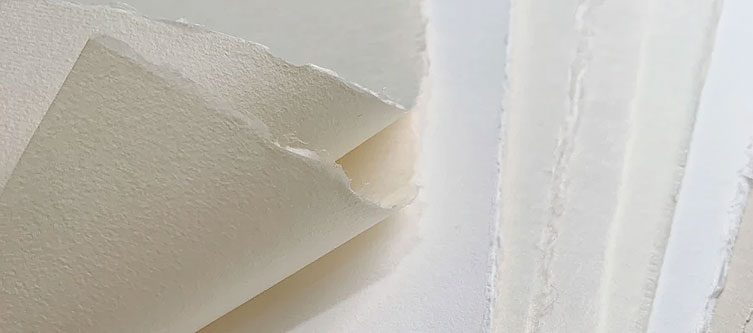There are different varieties of paper in the market and each of them is adapted to specific applications. Each of these types has certain properties with regard to composition, manufacturing, and handling. It is, therefore, extremely important to be familiar with each of these types of paper.
This helps the artist in choosing the right type of paper for a particular project. Here are the most common types of paper available in the market today:
1. Repro paper
This type of paper is also known as ‘printing paper’ or ‘offset paper’. As it is commonly used across the world, this variety of paper is produced in large quantities. The sheets are generally made with a small amount of cellulose and greater quantities of filler.
This facilitates printing, which is the main application of this variety. The common range of weight is from 70 to 90, but it can go as high as 100 grams. Manufacturers often want the highest possible degree of whiteness for this type of paper. Fillers are used for this purpose. This variety of paper doesn’t require much handling. It is only made strong enough to be folded or to go through a printer.
The evolution in the manufacturing process of this material resulted in the integration of pulp factories into paper factories. This was done to reduce costs and conduct the entire process in the same place. Normally, this paper is produced at a speed of 2,000 meters per minute in 9 to 10-meter-wide runs.
2. Couche or coated paper
This variety of paper is produced with shorter fibre. The filler used is joined to the fibre with the help of a binding agent. It can be either natural or synthetic. For better printing and resolution output, a coated layer is applied to the cellulose.
As a result, the ink remains on the surface and the result after printing is shinier and colourful. White coated paper is the most common option because the background colour won’t be apparent if the coating cracks. It has a matte or semi-matte finish, which involves the application of surface ink.
In this case, the ink is less shiny. This type of paper is less strong, as it has a greater amount of fibre and short fibre. It is manufactured at speeds of up to 1,000 meters per minute. The paper has production runs between 7 and 8 meters of width in the machine.
3. Tissue paper
Absorbent and soft, this type of paper has water resistance depending upon its sub-types. The paper used for making handkerchiefs withstand liquids to prevent them from falling apart. On the other hand, paper is used for making napkins dissolve easily. In order to achieve this, different treatments are done during the manufacturing process.
This type of paper is generally produced with virgin fibre. A mass-dyed process is used to manufacture coloured tissue paper. Once the paper comes out of the machine, prints and reliefs are applied offline. This type of paper is generally made in rolls and is 4 meters wide.
4. Fine art paper
The paper used for fine arts has different functional and technical features depending on the artistic method. It was devised as a better economical option for canvases. Some of these papers have excellent characteristics and can last for almost a century without turning yellow.
Between 1920 and 1930, the natural paper manufacturer Guarro Casas began manufacturing special papers. This was for the works by Miro, Pablo Picasso, and Garcia Lorca.


